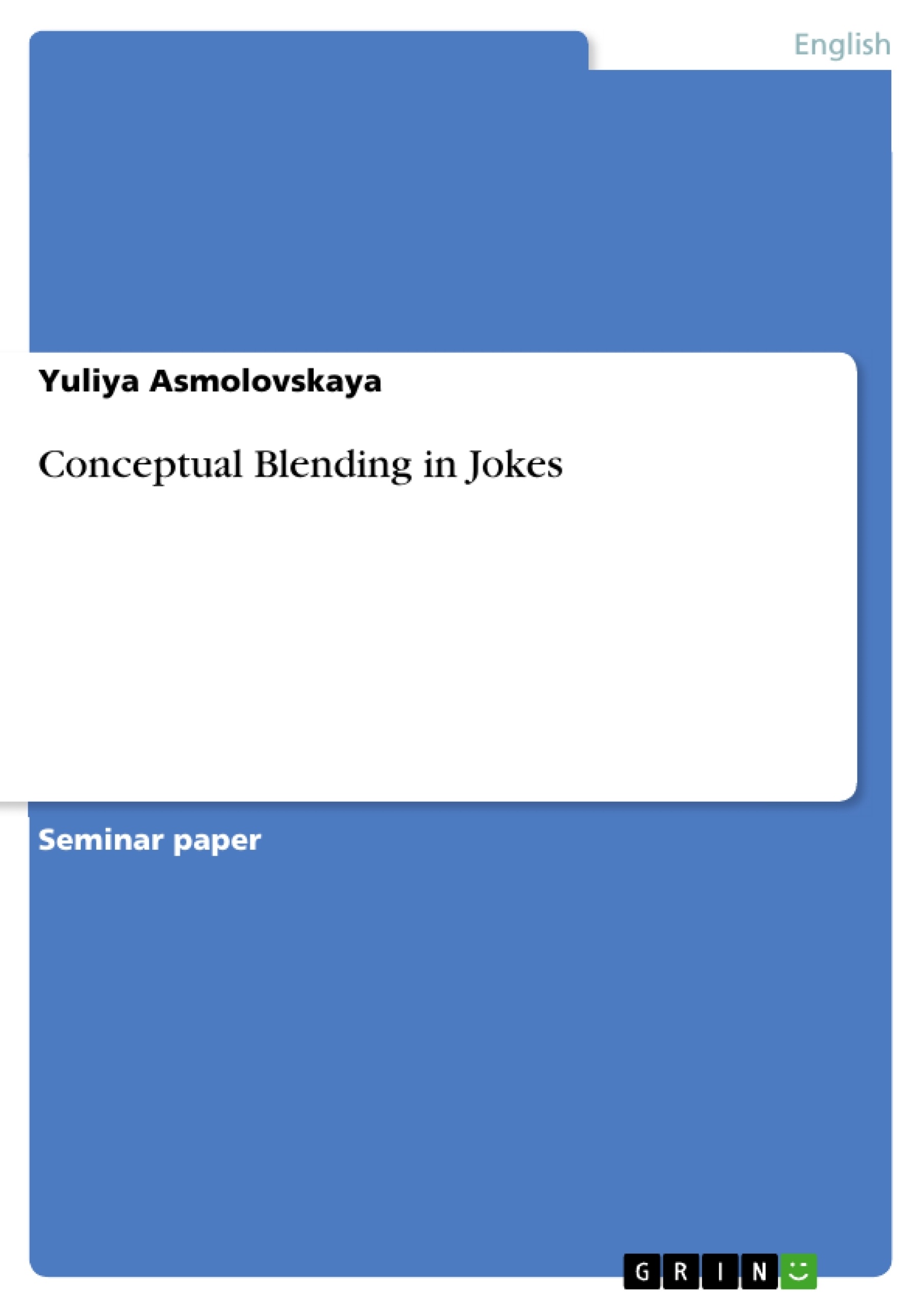The emerging ability for blending different mental spaces, so argue Fauconnier and Turner (2002: V), allowed humans to gain the upper hand over competing species from the Upper Paleolithic onwards, since this ability gave them the imagination required to invent new concepts, tools and means of communication (among them language). On the basis of this discovery and the initially developed Mental Space theory, Fauconnier and Turner advanced a striking theory called the Conceptual Blending theory. [...] Therefore, in this term paper I focus entirely on jokes, which I attempt to interpret by means of the Blending theory. To investigate cognitive processes involved in joke comprehension, I have interviewed four English native speakers with the intention of finding whether all of them are able to explain why the joke is funny and which incompatible elements are responsible for its humorous effect. Taking into account the participants' answers I have tried to define the input spaces (by naming their constituents) and the blended space. Additionally, the participants' answers were evaluated with regard to the role of background knowledge, which is necessary in order to comprehend the joke. Finally, I examined whether the Conceptual Blending theory might be applicable for the analysis of joke processing and comprehension in general and what difficulties can arise during the creation of the input spaces and the blend.
Thus, in the following sections I will first introduce important information on conceptual blending and then analyze selected jokes according to the Conceptual Blending theory, taking into consideration the interviewees' explanations of the jokes.
Central to Conceptual Blending theory is the notion of the conceptual blending network (or conceptual integration network), an array of mental spaces in which the processes of blending unfold (Fauconnier and Turner, 1998b). A basic conceptual integration network contains four mental spaces: two input spaces, a generic space and a blended space (see Figure 1).
Input spaces are on-line conceptual representations constructed under the influence of the incoming information but tapping stored cognitive models. [...]
Inhaltsverzeichnis (Table of Contents)
- Introduction
- Conceptual Blending
- Jokes and Their Analyses
- Irish Joke
- Lady Cop Joke
- Chinese Joke
- Doc Patient Joke
- Conclusion
- References
Zielsetzung und Themenschwerpunkte (Objectives and Key Themes)
This paper investigates the application of Conceptual Blending theory to the interpretation of jokes. The author aims to analyze specific jokes through the lens of this theory, examining how blended mental spaces contribute to their humor. The analysis incorporates interviews with native English speakers, examining their understanding of the jokes and the underlying cognitive processes involved.- Conceptual Blending as a Cognitive Framework for Joke Interpretation
- The Role of Input Spaces, Generic Spaces, and Blended Spaces in Joke Comprehension
- The Significance of Background Knowledge in Joke Understanding
- The Influence of Compression and Cross-Space Mappings on Humor
- The Applicability of Conceptual Blending Theory to Joke Processing and Comprehension
Zusammenfassung der Kapitel (Chapter Summaries)
Introduction
The introduction establishes the central focus of the paper: investigating joke interpretation through the lens of Conceptual Blending theory. The author highlights the significance of blending as a cognitive tool and introduces the research methodology, which involves analyzing jokes and conducting interviews with native English speakers.Conceptual Blending
This chapter delves into the core concepts of Conceptual Blending theory, introducing the notion of the conceptual blending network (or integration network) and its key components: input spaces, generic space, and blended space. The author elaborates on the role of each space in the blending process, emphasizing the dynamic interplay between them.Jokes and Their Analyses
This section focuses on analyzing specific jokes through the framework of Conceptual Blending. Each joke is presented, followed by a detailed analysis examining the input spaces, blended space, and the cognitive processes involved in its comprehension. The author also analyzes the interviewees' responses, highlighting their interpretations and how they align with the theoretical framework.- Arbeit zitieren
- Yuliya Asmolovskaya (Autor:in), 2009, Conceptual Blending in Jokes, München, GRIN Verlag, https://www.grin.com/document/148407




